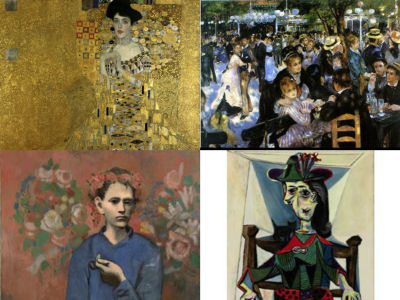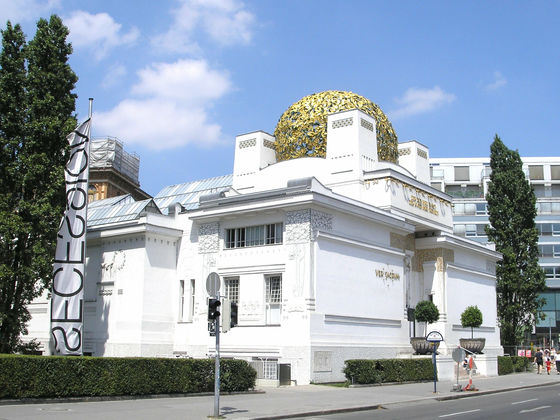Why was 19th century Austrian painter Gustav Klimt so obsessed with gold?

The Surprising Backstory Behind Gustav Klimt's Obsession With Gold
https://news.artnet.com/art-world/gustav-klimt-gold-2543498

At the end of the 19th century, the exhibition hall in Vienna was run by a conservative artists' association called the Künstlerhaus, and it was almost obligatory for Austrian painters to belong to the Künstlerhaus. Dissatisfied with this, Klimt and others formed the Vienna Secession , and after that Klimt repeatedly produced sensual nude paintings such as ' Nuda Veritas (Naked Truth),' and his works were described as 'provocative.'
Aside from his rivalry with the Künstlerhaus and sensual themes, Klimt was also obsessed with 'gold.' Klimt's masterpiece, ' The Kiss ,' is flashy and beautiful at first glance, but upon closer inspection, the man's neck is disfigured and twisted, and the painting is said to depict a 'filthy reality' in which 'men are the personification of sexual desire.' A large amount of gold leaf is used over the entire surface of 'The Kiss.'

The 1907 'Portrait of Adele Bloch-Bauer I' is also covered in gold leaf. In 2006, 'Portrait of Adele Bloch-Bauer I' was purchased for $135 million (about 16 billion yen at the time) and is ranked as the 'world's most expensive painting' due to its splendor.

Klimt presented the ' Beethoven Frieze ' for the Vienna Secession exhibition in 1902, and gold leaf was also used in this work. Also, below is a work called 'Life is a Struggle (The Golden Knight)' published in 1903, which you can see in detail on Google Arts & Culture . According to Artnet, the depiction of armor was one of the themes in which Klimt often incorporated gold into his canvases.

Artnet points out that Klimt's background influenced the reason for his preoccupation with gold decoration in the first decade of the 20th century. Klimt was born to a mother who aspired to be a musician and a father who was a sculptor and goldsmith. Later in life, Klimt began working with his brother Georg, who was also a sculptor and goldsmith like his father, and sometimes commissioned Georg to create gilded picture frames. Artnet states, 'These collaborations highlight Klimt's enthusiasm for decorative arts, his passion for gold, and the enduring family ties that shaped his work.'
Additionally, Klimt is said to have been inspired by Japanese art such as ukiyo-e and Rinpa , as seen in the Japonism exhibition held at the Vienna Secession in 1900. In addition to Japanese prints, Klimt was fond of all kinds of art, including motifs from Egyptian mythology and Impressionist modernism. In particular, Byzantine mosaics and icons , a cultural style of the Eastern Roman Empire from around the 6th century, used gold to represent the 'eternal realm,' so it is thought that Klimt drew inspiration from Byzantium to express a sense of eternity through gold.
Klimt was not the only artist to use gold leaf. Below is the Vienna Secession, designed by Joseph Maria Olbrich, an Austrian architect active from the late 19th century to the early 20th century. The building has a gold leaf dome on top, and is also called the 'golden cabbage' because of its shape.

By Gryffindor
Klimt was a prolific painter, with over 4,000 works remaining to this day, and it is believed that he completed over 200 paintings alone. Of these, only a small number of representative works use gold leaf lavishly. In addition, there were several other Vienna Secession artists other than Klimt and Olbrich who used gold decoration, and among the objects produced by the Vienna Workshop , which was made by the major artists of the Vienna Secession, objects and details using gold and gold leaf were very popular. By using gold in his own works, Klimt was able to add meaning to his works, while at the same time communicating with the designs and other artists of the time through gold. As a result, Artnet concludes that 'gold came to reflect the very modern sensibility of the artists of the Vienna Secession.'
Related Posts:
in Art, Posted by log1e_dh







